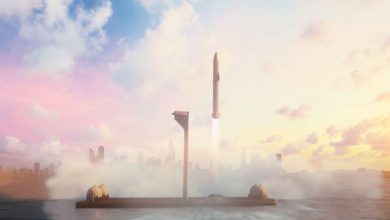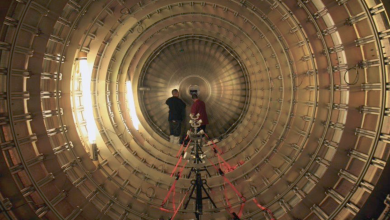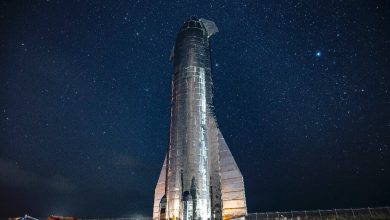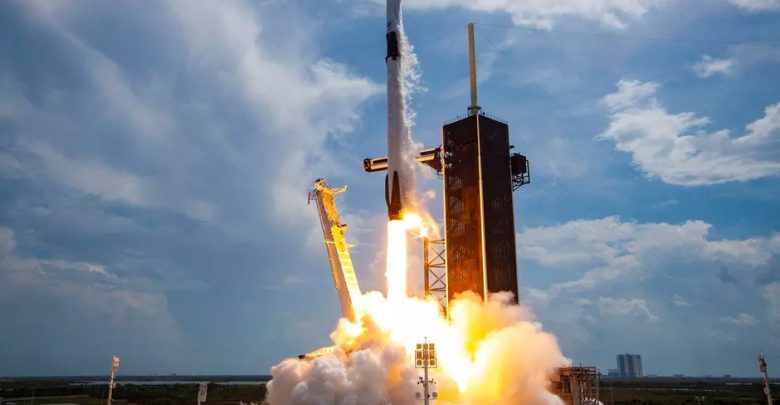
A SpaceX Falcon 9 rocket launched a new batch of 60 Starlink internet satellites into orbit on Wednesday afternoon (April 7) and nailed a landing at sea to top off a successful mission.
The veteran Falcon 9 rocket blasted off from Space Launch Complex 40 here at Cape Canaveral Space Force Station in Florida at 12:34 p.m. EDT (1634 GMT), marking the company’s 10th launch of the year.
“Falcon 9 has successfully lifted off from Cape Canaveral Space Force Station carrying our stack of Starlink satellites to orbit,” Jessie Anderson, a SpaceX manufacturing engineer, said during a live webcast of the launch.
Approximately nine minutes later, the rocket’s first stage returned to Earth, touching down on SpaceX’s drone ship “Of Course I Still Love You,” for its seventh successful landing.
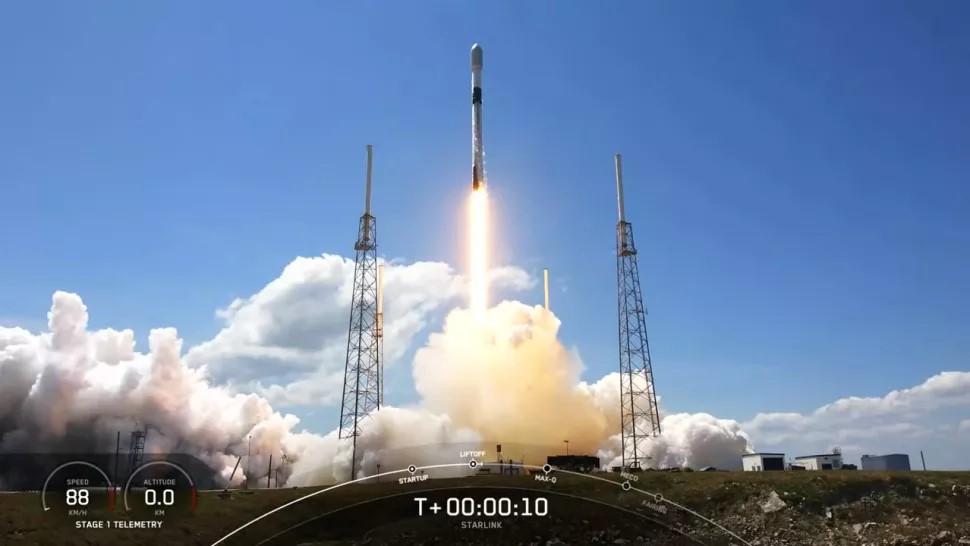
SpaceX is continuing the rapid launch pace set last year, as the Hawthorne, California-based rocket builder celebrated its 10th launch so far in 2021. The majority of those launches have been SpaceX’s own Starlink satellites, as the company inches closer to filling its initial internet constellation of 1,440 broadband satellites.
Though that constellation could eventually be tens of thousands of satellites strong as SpaceX has permission to launch as many as 30,000, with an option for even more.
Forecasters at the 45th Space Wing’s Weather Squadron predicted favorable conditions at launch and the weather did not disappoint. It was nothing but blue skies over the space coast today as the Falcon 9 rocket climbed to orbit.
Seven flights
The booster for today’s launch, called B1058, is one of SpaceX’s fleet of flight-proven boosters. The veteran flier now has seven launches and landings under its belt and is quickly rising up as one of the fleet leaders.
B1058 made its debut almost a year ago, as it became the first to sport NASA’s iconic worm logo. “The worm is back,” former NASA administrator Jim Bridenstine tweeted at the time.
The iconic red worm logo was created in the 1970s and used for a time before the space agency leaned solely on its other iconic symbol — the NASA meatball.
While the meatball is still the main logo, NASA has opted to feature the worm on its crewed missions. The once bright red script is now dark and sooty, a result of its many trips to space and back.
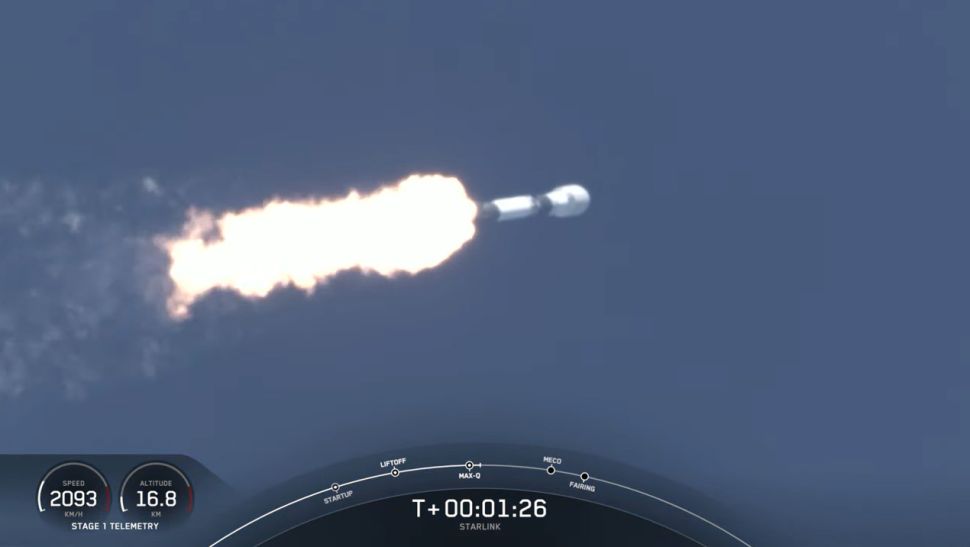
B1058 was the first commercial rocket to deliver astronauts to the International Space Station as part of NASA’s commercial crew program. It’s historic first flight, the Crew Dragon Demo-2 mission, which blasted off from Pad 39A at Kennedy Space Center here in Florida on May 30, 2020, marked the first time astronauts blasted off from U.S. soil since the end of the shuttle program in 2011.
After that, the booster flew a second time in July 2020, delivering a communications satellite into space for South Korea’s military.
The booster also delivered the first upgraded Dragon cargo capsule to the space station in December 2020 and made history again in January as the booster to deliver the most satellites in a single payload into orbit. That rideshare mission, dubbed Transporter-1, deposited a record 143 small satellites into space. (The previous record was held by India’s space agency for launching 104 small satellites in 2017.)
This is the 113th overall flight for Falcon 9, and the 59th flight of a used, refurbished booster. In fact, every single SpaceX launch so far in 2021 has been on a flight-proven rocket.
The mission also marks the fifth consecutive successful landing for SpaceX, after the company lost one of its six-time fliers on Feb. 15 when the rocket lost an engine during flight and subsequently failed to land on the drone ship, ending a more than two dozen catch streak.
SpaceX attributed the anomaly to an inflight shut down of one of the engines. The rocket’s first stage is powered by nine Merlin 1D engines and is designed to be able to complete its mission even if one of the engines shuts down prematurely.
Unfortunately the rocket was unable to slow itself enough to land on the drone ship as expected. Company officials have stressed that while losing a booster is unfortunate, the main objective of each mission is always to deliver the payload safely to its intended orbit. Anything beyond that is a bonus.
However, having a fleet of flight-proven rockets at its disposal allows SpaceX to keep up with its rapid launch cadence.
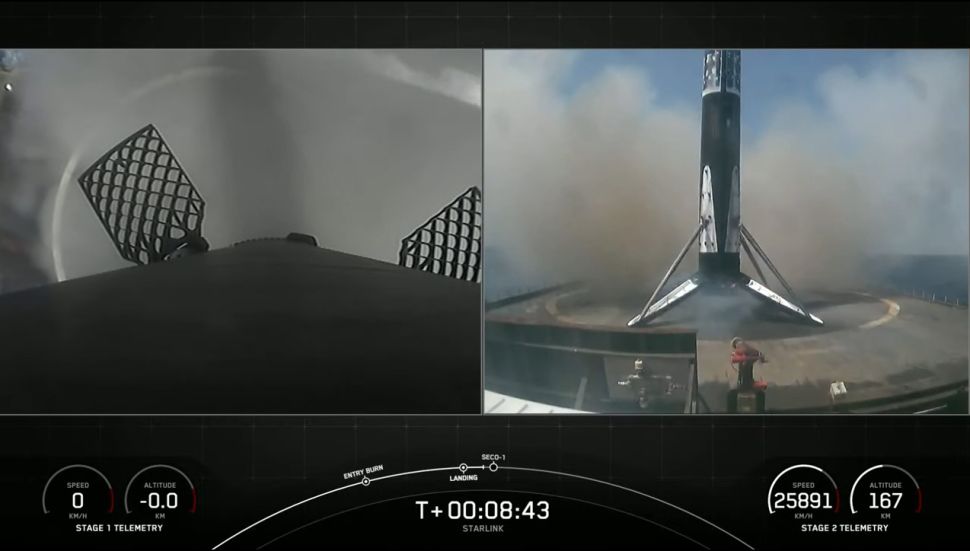
Constellation expansion
With today’s launch success, SpaceX has launched a total of more than 1,400 Starlink satellites into orbit, which includes some that are no longer operational. This almost fills the company’s initial quota, as some have deorbited. And there are many more launches coming as the company has sought approval for tens of thousands more.
SpaceX launched its massive internet constellation, with one major goal: to connect the globe. To that end, company engineers designed a fleet of flat paneled broadband satellites to fly over the Earth, beaming down internet coverage to users across the globe — especially those in rural and remote areas who otherwise would not have connectivity.
Currently Starlink is still in its beta-testing phase with users in the U.S., Canada, the U.K., Germany and New Zealand able to access the service. SpaceX is taking preorders in preparation for when its full commercial services rollout sometime later this year. Prospective users can start reserving the service with a $99 deposit right now by signing up on the company’s website.
SpaceX is not the only company with aspirations of connecting the globe. OneWeb, Amazon and Telstar all have constellations of their own planned. However, OneWeb is currently the only other service with actual satellites in space.
The London-based company launched 36 of its satellites last month on a Russian Soyuz as it works to fill out its planned constellation containing 650 satellites. (To date, OneWeb has launched five of its planned 19 missions.)
Falling fairings
Both of the fairing halves featured in today’s mission have flown before, and with any luck, they will fly again soon.
That is, if they land intact. With the help of onboard parachutes the clamshell-like hardware will gently splashdown in the Atlantic Ocean and be pulled from the water by SpaceX’s newest boat, a bright pink and blue vessel named Shelia Bordelon.
Participating in its second mission, Shelia Bordelon will use an onboard crane to retrieve the fairings. It’s unclear if this boat will be a permanent member of the fleet or if she’s just helping out short term.
SpaceX is officially retiring it’s twin fairing catchers — GO Ms. Chief and GO Ms. Tree — and will be relying on other recovery vessels to retrieve the falling fairings in the future.


